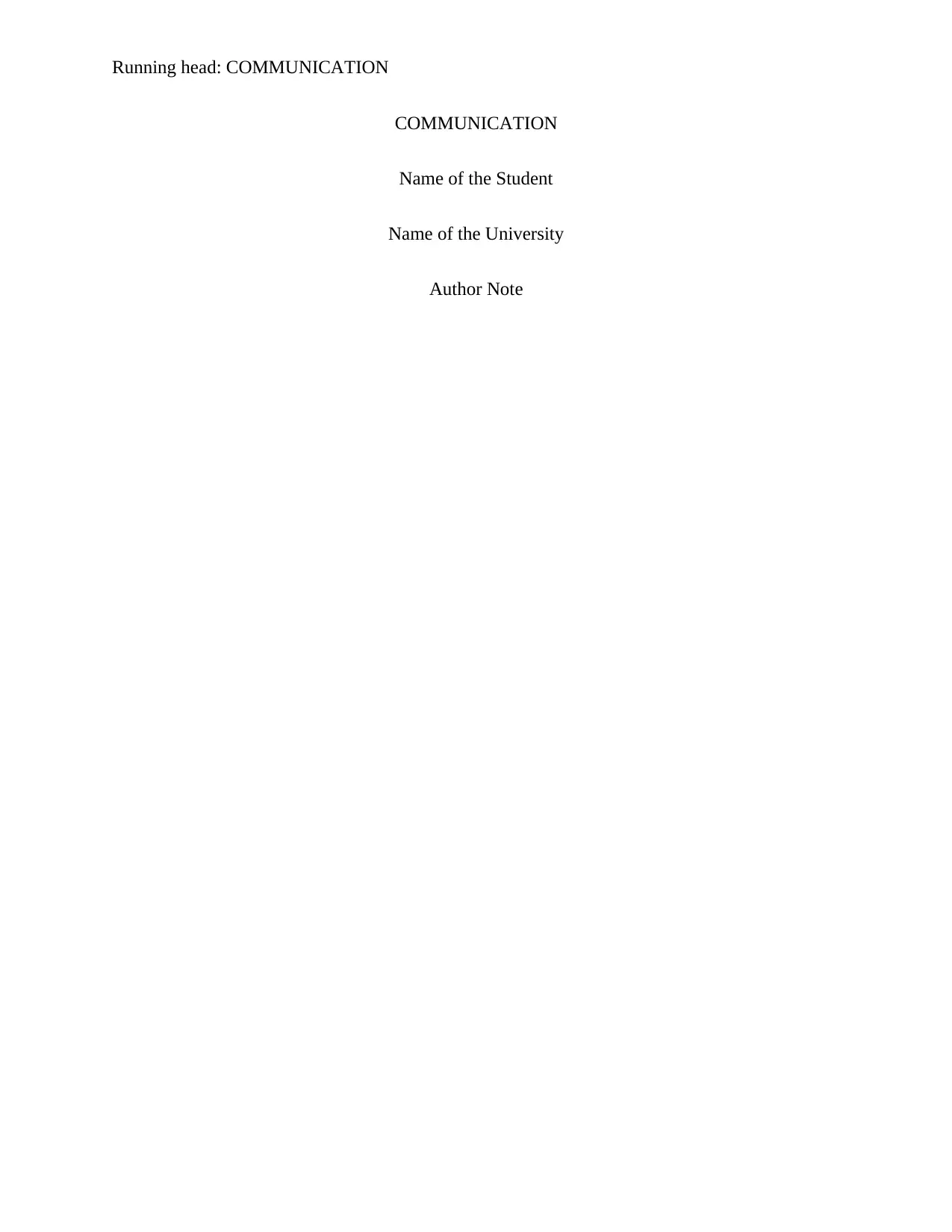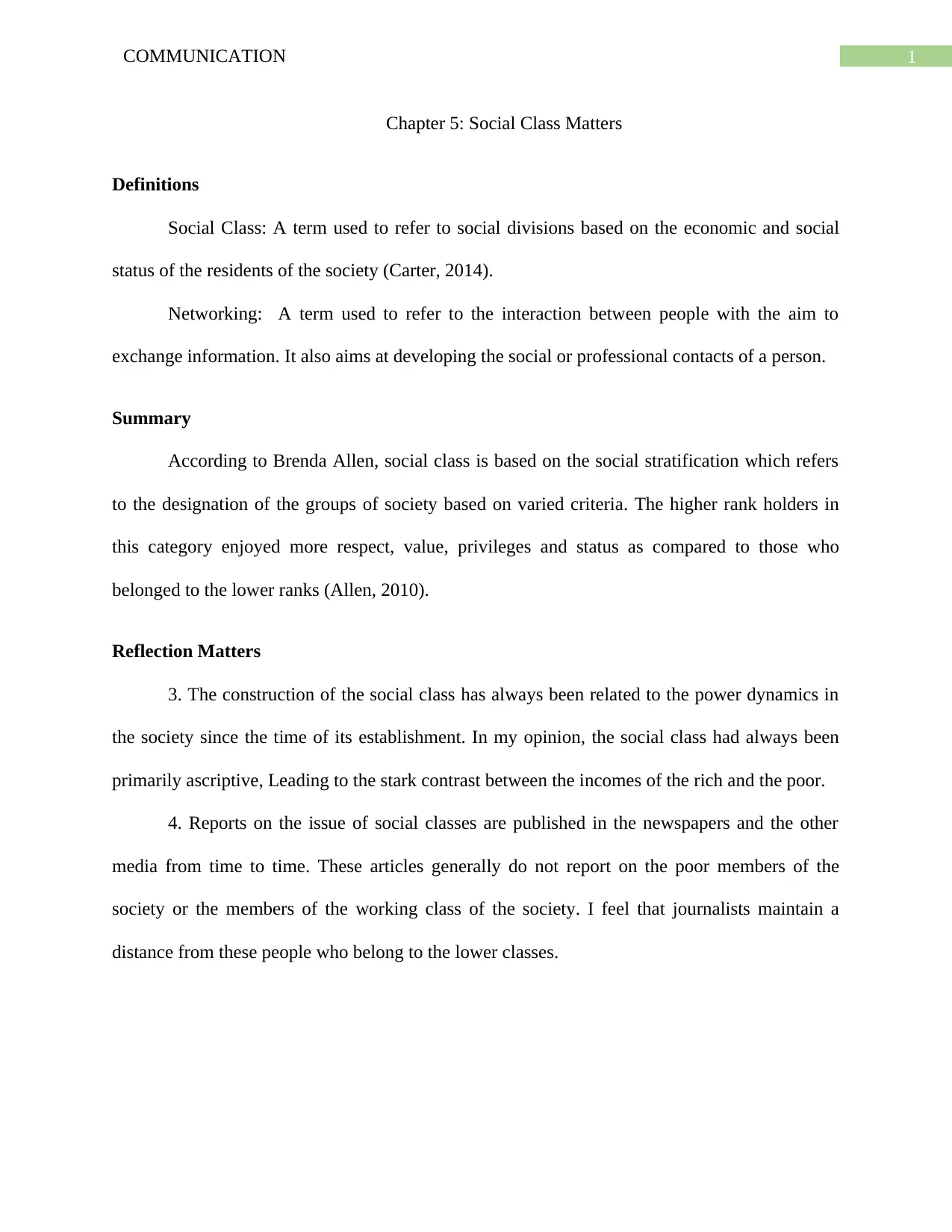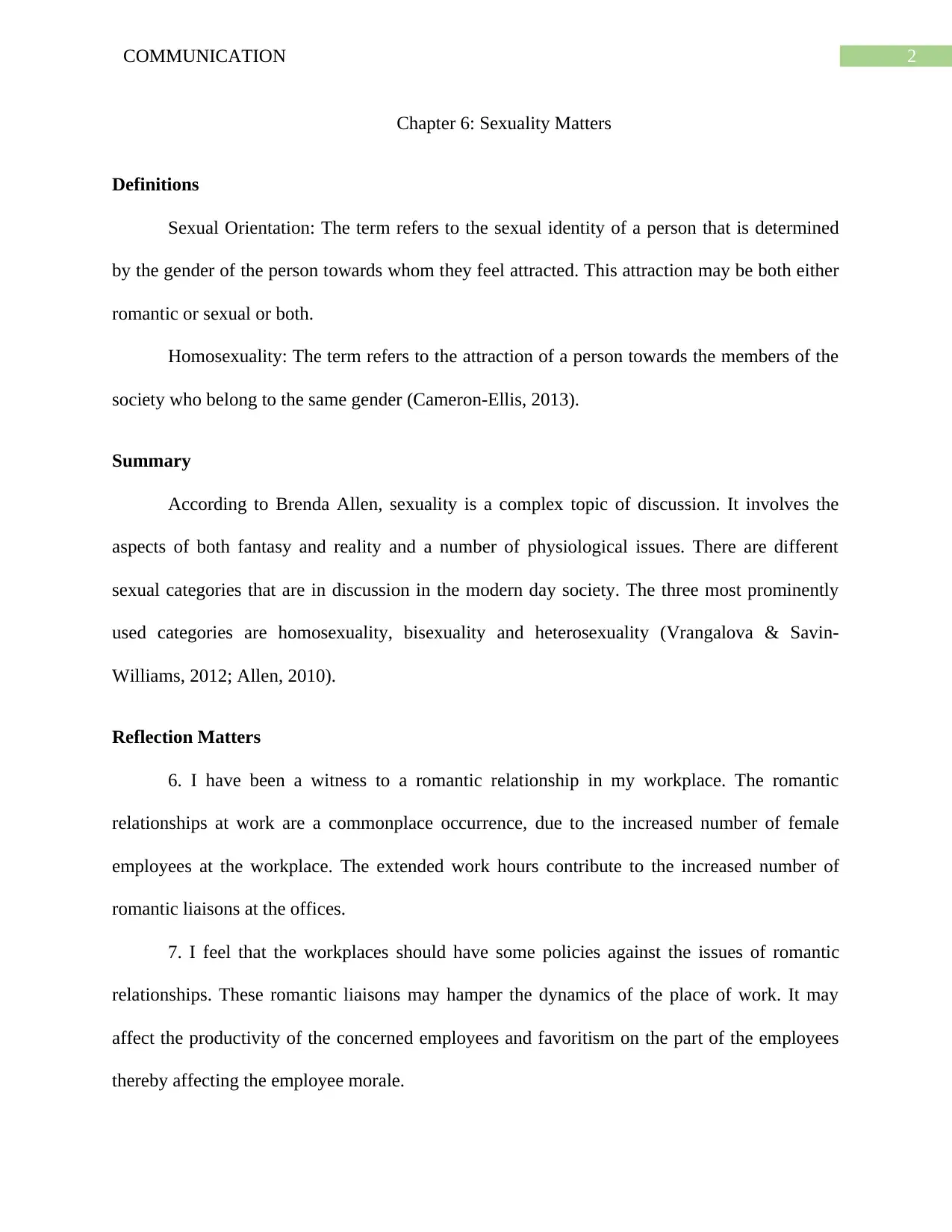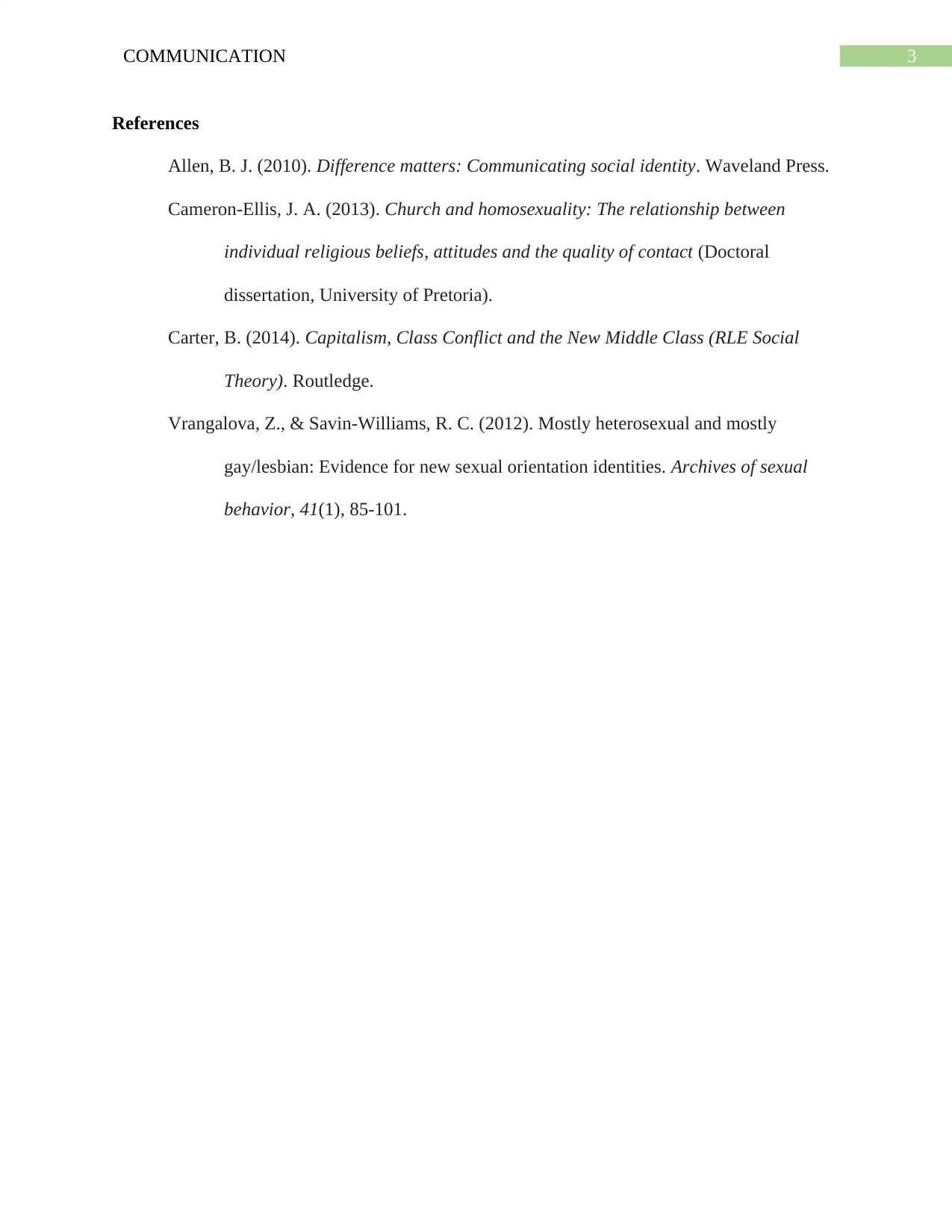University Sociology Report: Social Class and Sexuality Matters
VerifiedAdded on 2020/05/08
|4
|642
|162
Report
AI Summary
This report examines the concepts of social class and sexuality within a sociological context, drawing upon the works of Brenda Allen and other researchers. The report defines social class as a stratification based on economic and social status, and sexuality as encompassing various aspects of identity and attraction, including homosexuality, bisexuality, and heterosexuality. The report also includes reflections on workplace romantic relationships and the impact of social class on communication. It highlights the power dynamics associated with social classes and the potential impact of romantic relationships on workplace productivity and morale. The report provides definitions, summaries, and reflections on communication, social identity, and workplace dynamics. The report explores the intersection of these concepts and their implications for individuals and society.
1 out of 4






![[object Object]](/_next/static/media/star-bottom.7253800d.svg)